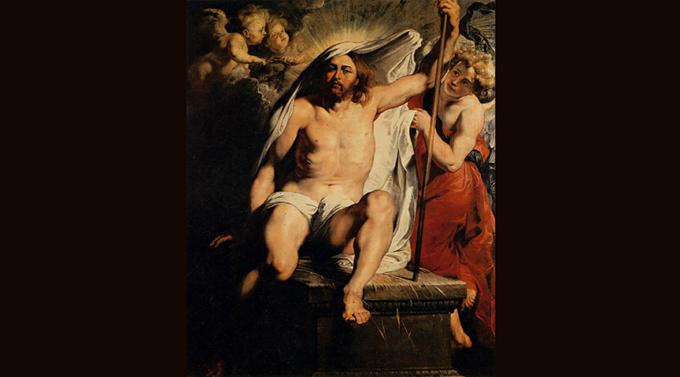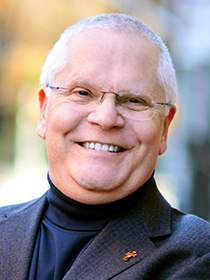
Culture
These appearances remind us that Christianity involves both communion and community. It is lived among others.

Kandra
Acts 3:13-15, 17-19
Ps 4:2, 4, 7-8, 9
1 Jn 2:1-5a
Lk 24:35-48
"You are witnesses of these things."
It almost sounds like an episode of "CSI: Jerusalem." But the case unfolding in this Sunday's Gospel is part of a larger story that gives the overwhelming events of Holy Week and Easter a surprisingly relatable, realistic dimension.
Luke gives us a risen Jesus who not only appears, talks and teaches, but he is also a Jesus who is unmistakably human. He even makes it clear he's not a mirage, a phantom or a figment of their imagination. This is nothing supernatural. He is real. "A ghost," he explains patiently, "does not have flesh and bones." (It sounds so startling, coming from the Son of God, I have to wonder if he actually said that with a straight face.)
If that weren't enough, it turns out the resurrected Christ has worked up an appetite. "Have you anything here to eat?," he asks. The apostles must have been flabbergasted (and, maybe, embarrassed that they didn't offer him something first). It is a remarkable scene in so many ways -- vivid, tactile, a little awkward, almost comical.
But it also conveys something that is vitally important in the post-Resurrection appearances. Passages like this serve to tell us, again, that these aren't flukes, daydreams, or isolated cases of someone having too much wine and imagining he spotted a friend walking along the road. The Gospel assures us: A lot of people saw Jesus, heard him, even touched him.
Read the Scriptures and you can't escape a recurring theme. Again and again, Christ appears to groups -- the women outside the tomb, the couple walking to Emmaus, the believers gathered in the Upper Room. Just as he tells them in this Sunday's Scripture, "You are witnesses of these things," he is almost attentively, thoughtfully, building the case for his Resurrection. It's as if he is saying, "Take notes. Write this down. You all can corroborate this. You are my witnesses."
And we come to realize he is not just speaking to those in the room. He is speaking to all of us, across the centuries. In our way, we all bear witness to the life, death and resurrection of Christ, and testify to it every day with our words, our actions, our choices. We continue what he began.
But, significantly, we don't do it alone.
These appearances remind us that Christianity involves both communion and community. It is lived among others.
Jesus first sent his followers out two-by-two to preach the Good News. When he rose from the dead, he appeared repeatedly to multiple people at a time. And today, the great work that he began continues with communities of believers.
The message is clear: the Good News we hold in our hearts is not something meant to be kept to ourselves. It's meant to be lived, practiced, shared with others.
Christ's great work in the world -- the work of saving souls, healing wounds, opening eyes, inspiring hope -- is to be lived and spread everywhere.
The fundamental message of the Resurrection is heard in Christ's first word to his followers: "Peace." What he conveyed to them is now our charge to convey to others. We need to spread the word.
In these weeks after Easter, as the flowers fade and the chocolate eggs get eaten and we get accustomed once again to "Alleluias" ringing through the air, it can be easy to take for granted the splendor of this moment. We shouldn't. Pentecost is coming, and fire will fall and another thunderous event will remind us of the church's first days and the astounding tale we have to tell.
We are Easter people!
This Sunday's Scripture serves to keep that idea before us -- and help us remember this beautiful truth: We are all witnesses of these things.
- Deacon Greg Kandra is an award-winning author and journalist, and creator of the blog, "The Deacon's Bench."
Recent articles in the Culture & Events section
-
What is truth?Michael Reardon
-
The 75th anniversary of St. Ignatius of Loyola Church, Chestnut HillThomas Lester
-
The most important prayer you already knowLaura Kelly Fanucci
-
Two years after DobbsRussell Shaw
-
Scripture Reflection for July 21, 2024, Sixteenth Sunday in Ordinary TimeDeacon Greg Kandra





